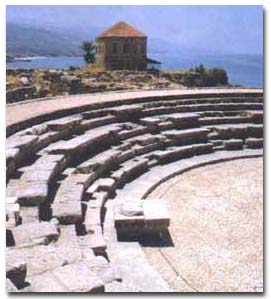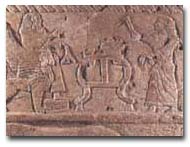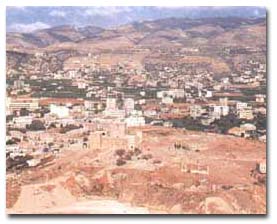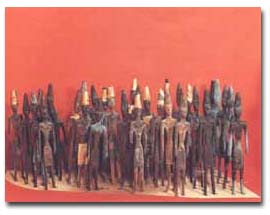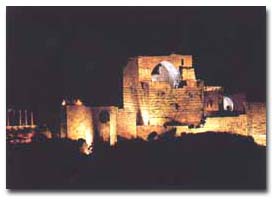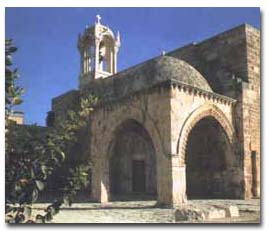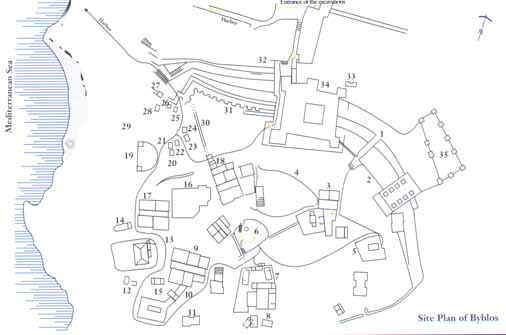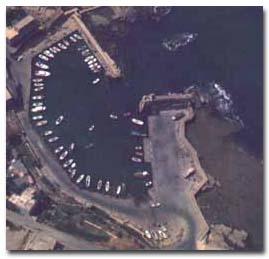|
1.
Remains of a city Gate dating from the third millennium B.C. Located
on the left side of the castle, this gate appears as a wide opening
between two ancient stone ramparts. Traces of fire are visible,
recalling the Amorite invasion about 2300-1900 B.C.
2.
A Primitive Wall built before 2500 B.C., this is the oldest
fortification on the site.
3.
Foundations of the Temple “en L” (so called because of its shape)
erected in 2700 B.C. A section of charred stone at the entrance of the
sacred court is evidence the temple was destroyed by fire, probably at
that time of the Amorite invasions 2300-1900 B.C. Terra cotta basins
set in a bench of masonry behind the entrance probably held water for
ritual ablutions.
4.
The large empty area adjacent to the “Temple en-L” and the Temple
of Baalat Gebal was occupied by the Sacred Pool.
5.
Temple of the Obelisks, originally built on top of the “Temple en
L” was moved by archaeologists to its present location. Its scores
of small obelisks were used as votive offerings. Altogether over 1,306
offerings have been uncovered, including human figurines of bronze
covered with gold leaf.
6.
The area that was once the Spring called “Ayn el-Malik” can be
seen in a large cistern constructed of irregular stone. This was the
main source of water for Byblos. In the Isis and Osiris myth, Isis met
the queen’s maidservants here.
7.
Enclosure and houses of the pre-urban period (about 3200-3000 B.C.).
8.
Foundations of three houses. The lower one is from the Chalcolithic,
the upper one from the pre-urban period (second half of the forth
millennium B.C.). A little farther south is a third house in whose
rooms can be seen seven stone bases which held the wooden pillars used
for the superstructure.
9.
Remains of a large Early Bronze Age Residence (third millennium B.C.)
in whose rooms can be seen three rows of five stone pillar bases, each
of which held wooden pillars used for the superstructure.
10.
Early Bronze Age building foundations (third millennium B.C.).
11.
House foundations of the Amorite conquest period (2150-2000 B.C.).
|
